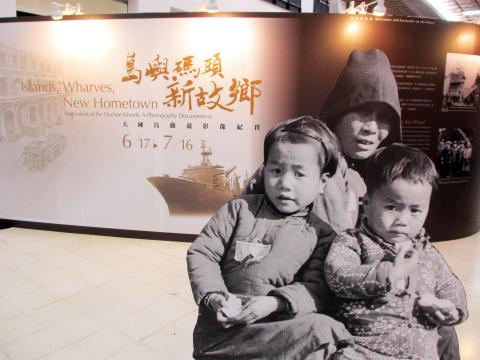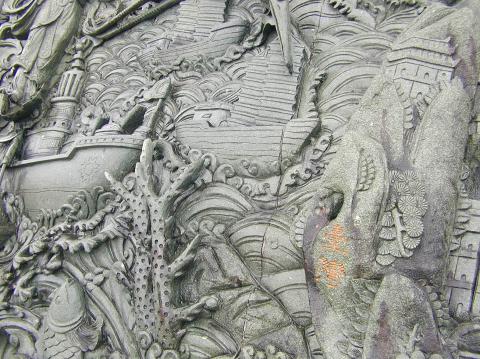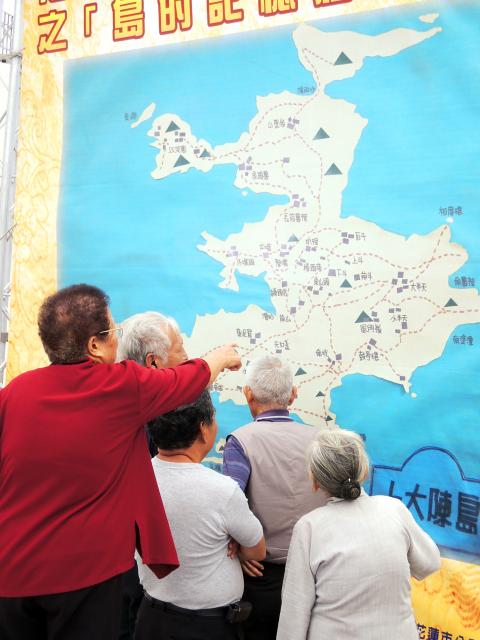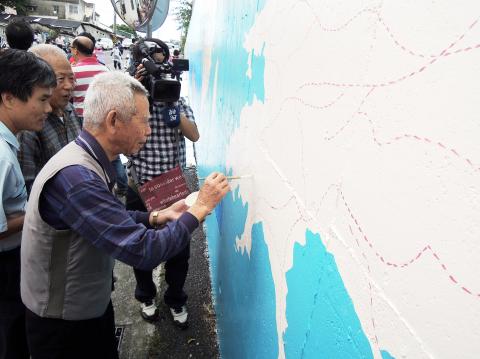FEB. 5 to FEB.11
Lin Yu-lin (林玉麟) remembers seeing an “ocean of fire” to the north of his native Dachen Island (大陳島). It was late January, 1955, and the Chinese Communist Party (CCP) had just obliterated the Chinese Nationalist Party (KMT) garrison on Yijiangshan (一江山).
Lin and other islanders knew that Dachen would be next. And as expected, the bombs started falling, killing 35 people and destroying much property on Jan. 30. On Feb. 8, the people of Dachen boarded numerous small ships and headed toward Taiwan under the protection of the US’s Seventh Fleet.

Photo courtesy of Wikimedia Commons
More than 15,000 arrived in Keelung over the next four days. Most sources indicate that the entire population was evacuated except for one ailing man who was left behind.
Upon arrival in Taiwan, they were officially referred to as the Dachen Righteous Compatriots (大陳義胞) for their “unwillingness to accept the barbaric rule of the Communists” and their great sacrifice of their homes to “run to the arms of freedom without looking back.”
FULL EVACUATION

Photo: Lee Chen-hua, Taipei Times
Although the KMT had officially relocated to Taiwan at the end of 1949, the civil war carried on as they still held several islands off the Chinese coast.
While most of them fell in 1950, Dachen and its surrounding islands, located off the coast of KMT leader Chiang Kai-shek’s (蔣介石) home province of Zhejiang, would hold on for several more years.
“To Chiang, it was the last piece of territory he held in his home province,” Chen Ling (陳玲) writes in the book Memories of Dachen (大陳記憶). “It embodied his yearning toward the mainland and also was an important front for his plan to retake China.”

Photo: Wang Chin-yi, Taipei Times
The KMT launched many unsuccessful attacks on China from these islands in the early 1950s, and with the Korean War ceasefire in 1953, the CCP turned its attention to removing this thorn in its side.
After the fall of Yijiangshan, Chiang asked the US to protect Dachen, but the US considered the island of little strategic importance and was only willing to help evacuate the residents. KMT minister of defense Yu Ta-wei (俞大維) wrote in a 1954 report that it was impossible to defend Dachen because of its distance from Taiwan.
After much negotiation, on Feb. 5, 1955, the official evacuation announcement was made.

Photo: Wang Chin-yi, Taipei Times
Once the Dachen islanders landed in Taiwan, the government built fishing, farming and commercial and industrial villages to house them. Since most of them left in a hurry and were housed in different locations upon arrival, it took a while for some families to reunite. They also received material support and job training from the government.
MEMORIES OF THE RETREAT
Although the KMT portrayed the Dachen islanders’ willingness to leave their homes as a noble sacrifice, it obviously wasn’t the case for everyone. Many Dachen residents told their personal stories in a 1997 edition of the Yilan Journal of History (宜蘭文獻), and several claim that the KMT told them that they would be able to return soon. Believing this, they only carried a 20kg to 30kg sack and left everything else behind.
Departure wasn’t easy — there was a case of an old man committing suicide because he was in poor health and his family insisted on staying with him.
Huang Ho-sheng (黃荷生) says he decided to leave when he heard that the Communists were killing all intellectuals, landowners, homeless people and KMT members.
“I joined the KMT in 1950, and my head would definitely have been lopped off,” he says.
There were those who shared the KMT’s sentiment. Dachen native Chen Jen-ho (陳仁和) writes in his book, Dachen, the Island of Heroes (大陳島 — 英雄之島) that he considered their exodus a KMT victory over the Communists, as it proved that people would rather leave their homeland than side with “evil.”
“We all carry a ‘Dachen spirit’ forged by our hardships,” he writes. “We will bring that spirit to Taiwan, and give our all to fight the Communists and reclaim our country. We believe that soon we will join the government in retaking the mainland, and then we shall return to Dachen.”
It seems that many shared Chen’s views, as his book shows several photos of anti-Communist slogans painted on the village walls as people vowed to help the Nationalists defeat the bandits.
Unfortunately, the exodus became permanent. Dachen descendants are mostly assimilated into mainstream society today — although restaurants serving Dachen cuisine can still be found in New Taipei City’s Yonghe District (永和).
Taiwan in Time, a column about Taiwan’s history that is published every Sunday, spotlights important or interesting events around the nation that have anniversaries this week.

This month the government ordered a one-year block of Xiaohongshu (小紅書) or Rednote, a Chinese social media platform with more than 3 million users in Taiwan. The government pointed to widespread fraud activity on the platform, along with cybersecurity failures. Officials said that they had reached out to the company and asked it to change. However, they received no response. The pro-China parties, the Chinese Nationalist Party (KMT) and Taiwan People’s Party (TPP), immediately swung into action, denouncing the ban as an attack on free speech. This “free speech” claim was then echoed by the People’s Republic of China (PRC),

Exceptions to the rule are sometimes revealing. For a brief few years, there was an emerging ideological split between the Democratic Progressive Party (DPP) and Chinese Nationalist Party (KMT) that appeared to be pushing the DPP in a direction that would be considered more liberal, and the KMT more conservative. In the previous column, “The KMT-DPP’s bureaucrat-led developmental state” (Dec. 11, page 12), we examined how Taiwan’s democratic system developed, and how both the two main parties largely accepted a similar consensus on how Taiwan should be run domestically and did not split along the left-right lines more familiar in

Specialty sandwiches loaded with the contents of an entire charcuterie board, overflowing with sauces, creams and all manner of creative add-ons, is perhaps one of the biggest global food trends of this year. From London to New York, lines form down the block for mortadella, burrata, pistachio and more stuffed between slices of fresh sourdough, rye or focaccia. To try the trend in Taipei, Munchies Mafia is for sure the spot — could this be the best sandwich in town? Carlos from Spain and Sergio from Mexico opened this spot just seven months ago. The two met working in the

Many people in Taiwan first learned about universal basic income (UBI) — the idea that the government should provide regular, no-strings-attached payments to each citizen — in 2019. While seeking the Democratic nomination for the 2020 US presidential election, Andrew Yang, a politician of Taiwanese descent, said that, if elected, he’d institute a UBI of US$1,000 per month to “get the economic boot off of people’s throats, allowing them to lift their heads up, breathe, and get excited for the future.” His campaign petered out, but the concept of UBI hasn’t gone away. Throughout the industrialized world, there are fears that